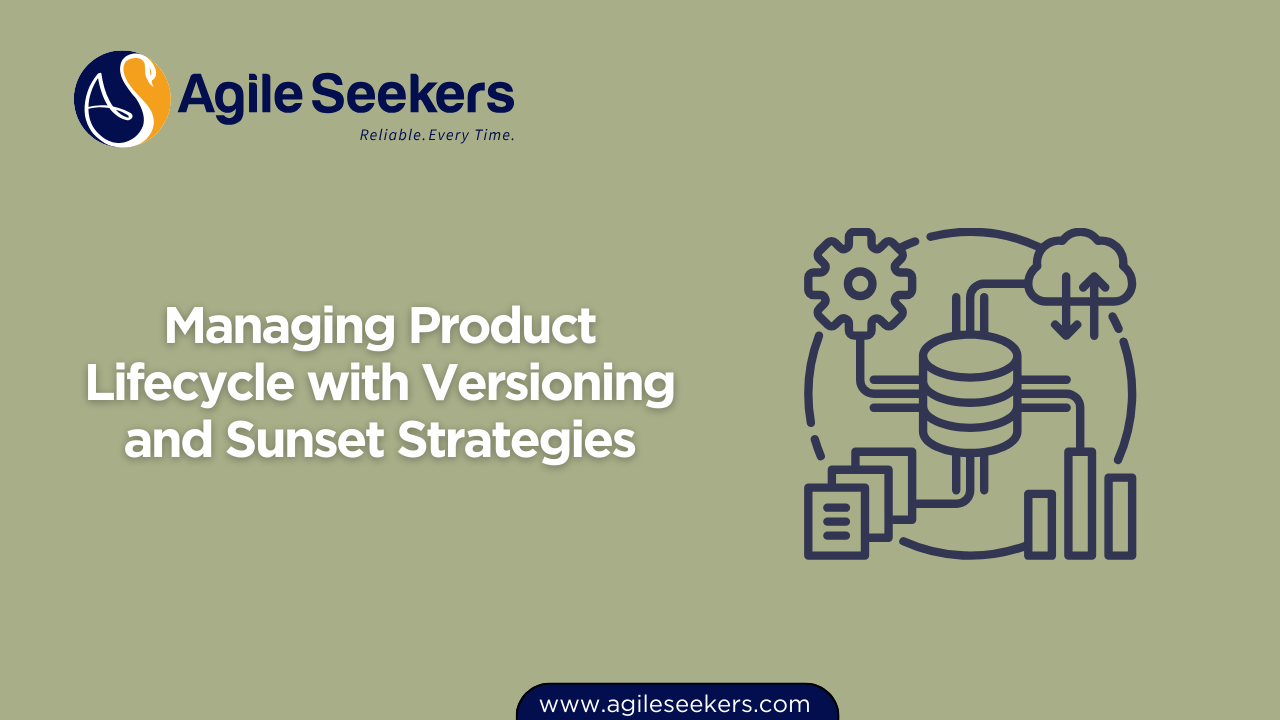Managing Product Lifecycle with Versioning and Sunset Strategies

Managing a product throughout its lifecycle goes beyond launching features and collecting feedback. To maintain value over time, product managers need a deliberate approach to version control and sunset planning. These two strategies ensure products evolve in alignment with customer expectations while preventing the organization from being weighed down by outdated features or legacy support.
This post outlines how to structure product versioning and sunset strategies as part of a mature product lifecycle management approach. These practices are critical for SAFe Product Owner Certification holders and PMP certification training participants who must handle complex portfolios across development cycles.
Understanding the Product Lifecycle
Every product moves through distinct stages: introduction, growth, maturity, and decline. While feature delivery and scaling dominate the early phases, the latter stages require tough decisions about support, evolution, or discontinuation.
- Introduction: Product is launched. Metrics focus on adoption and feedback.
- Growth: Rapid iteration and version releases based on user demand.
- Maturity: Core capabilities stabilize. New features are incremental. Cost control becomes a focus.
- Decline: Usage slows. Teams consider product replacement or deprecation.
Without versioning and sunset strategies, teams often struggle with overlapping codebases, high maintenance costs, and customer dissatisfaction.
Why Versioning Matters
Versioning allows teams to organize the delivery of changes in a structured way. It signals to customers and internal stakeholders what to expect from a release—whether it's a minor improvement or a significant platform shift.
Effective versioning includes:
- Semantic versioning (SemVer): A format like MAJOR.MINOR.PATCH helps set expectations. For example, 3.2.1 indicates major version 3, minor update 2, and patch 1.
- Backward compatibility: Teams must determine whether changes require customer migration or can run alongside existing functionality.
- Communication strategy: Each version should come with clear documentation, change logs, and timelines for support.
According to Martin Fowler’s guide to versioning, good version control prevents 'dependency hell' and promotes confidence in platform evolution.
Types of Product Versioning Strategies
| Versioning Strategy | When to Use | Benefits |
|---|---|---|
| Semantic Versioning (SemVer) | API-based or modular systems | Clarity in release types and backward compatibility |
| Date-Based Versioning | Time-based releases (e.g., quarterly) | Predictability and simplicity |
| Incremental Build Numbers | Internal release cycles | Rapid deployment visibility |
Sunsetting: Planning the End Before It Arrives
Sunsetting a product or feature means phasing it out responsibly. The goal is to reduce long-term technical and support debt without eroding customer trust.
Common Sunset Scenarios
- A legacy product is being replaced by a new platform.
- A feature shows consistently low usage or ROI.
- Technology dependencies are outdated or insecure.
Having a sunset strategy helps teams handle transitions without disrupting existing users. This practice aligns with the expectations of professionals pursuing a SAFe POPM Certification where lifecycle governance is central to value delivery.
Steps for a Successful Sunset Strategy
- Analyze Usage and Dependencies: Use telemetry and customer interviews to assess impact.
- Inform Stakeholders Early: Communicate timelines, reasons, and alternatives.
- Offer Migration Paths: If deprecating a feature, provide updated documentation or tools for transition.
- Set a Clear Timeline: Include end-of-life dates and support windows in all materials.
- Document and Archive: Retain documentation and code for compliance and reference.
Combining Versioning with Sunset Planning
When managed together, versioning and sunset planning build confidence among engineering, customer success, and leadership teams. A new version release can introduce changes while formally triggering the phase-out of older versions. For example:
- Version 4.0 might introduce a new UI framework, while marking the 2.x branch as deprecated.
- Minor versions (e.g., 3.9.5 to 3.9.6) can deliver bug fixes without requiring sunset actions.
Teams can document these transitions in release notes, developer portals, and internal systems. This helps product managers stay proactive rather than reactive when scaling product complexity. As recommended by ProductPlan’s glossary on lifecycle management, having governance structures supports smoother product transitions.
Tools That Support Lifecycle Management
Several tools help manage versioning and sunset timelines:
- Jira or Azure DevOps: For tracking support deadlines by version.
- LaunchDarkly or Split: For gradually sunsetting features via feature flags.
- Docs-as-code platforms: Automate versioned documentation with platforms like Docusaurus.
Who Owns Versioning and Sunset Plans?
The responsibility is shared:
- Product managers define lifecycle and sunset criteria.
- Engineering leads assess technical feasibility and timing.
- Customer success manages communications and client expectations.
- Marketing teams help position version transitions and feature retirements.
This collaborative model reflects competencies covered in both the Project Management Professional certification and SAFe POPM training, where stakeholder engagement is key.
Final Thoughts
Managing a product’s lifecycle with structured versioning and sunset strategies enables long-term sustainability. Instead of being caught off guard by aging infrastructure or redundant features, teams can stay ahead by planning transitions with transparency.
Whether you're a certified product owner or a project manager navigating complex delivery portfolios, incorporating these practices improves governance, reduces risk, and supports scalability. For professionals exploring formal training, enrolling in a PMP training program or SAFe POPM Certification helps deepen your understanding of these principles.
Also read - Understanding API Design Principles for Product Managers
Also see - Aligning Cross-Platform Product Consistency in Web and Mobile




















